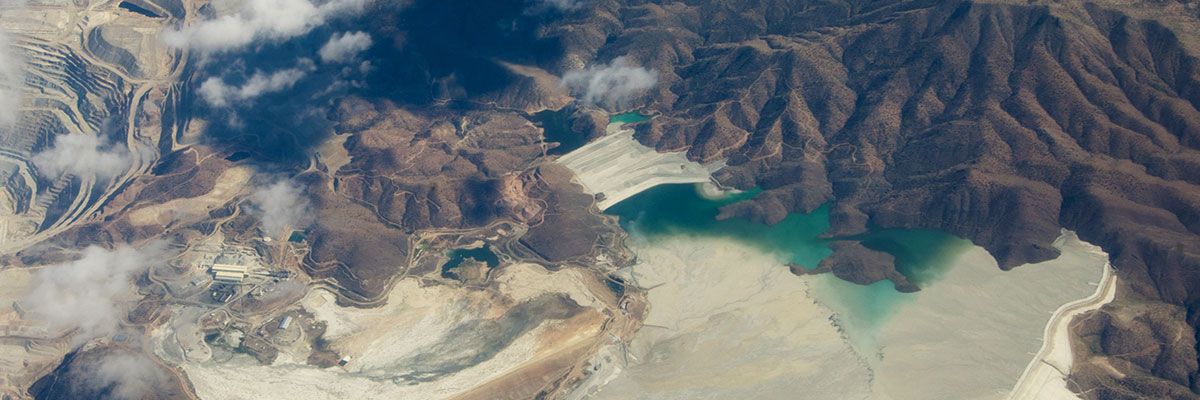
Mining Industry is moving on Tailings Best Practice
Mine Tailings Management is attracting attention globally, as it has a major impact on sustainability and on the communities living in the vicinity of mining activity. With depleting ore reserves the quantity of tailings generated is increasing, as miners try to fulfill demand for minerals. In 2010 alone the amount of mine tailings generated globally was around 14 billion tonnes! The situation entails major risks, as often it involves wet tailings and therefore calls for action from all stakeholders including the mining industry and governments in mining countries around the world.
We have started to see a more positive and proactive approach, and some examples are listed below, but more needs to be done to ensure safe and sustainable mining operations. Only then can we improve the mining industry’s reputation.
- Legislation is being brought in by some local governments, forcing mining companies to treat the tailings they generate and to stop the usage of tailings dams. This is because a number of disasters have occurred in recent years due to failures of tailings dams.
- Some mining companies have started disclosing details of their tailings storage facilities (TSF) across the world, including disclosure of sustainability targets in their annual financial reports.
- The number of mine safety and sustainability audits through independent agencies, as well as by government authorities, has increased. For example, the International Council on Mining and Metals (ICMM) has launched a global review of tailings storage facility standards and critical controls across it’s member companies.
- Mining industry is showing willingness to make investments in safe and sustainable solutions for managing tailings when compared to the earlier days.
- The industry has started looking at recovery of valuable products from tailings (apart from the recovery of water) with support from technology companies and research based organizations.
The design of a TSF and its closure requires a multi-disciplinary approach, as it involves civil and environmental engineering, geology, hydrology, geochemistry, mechanical engineering, process engineering and mine planning. Mining companies are mainly focused on mining and mineral development activities, and therefore have to depend on external specialists for design and operation of the TSF. Large mining corporations do have their own tailings specialists but still have to rely upon external specialists for quality assurance and monitoring of the TSF.
Global guidelines and best practices that are available to design a TSF include but are not limited to:
- International directives such as the IFC, Mine Waste Directive, the EC Seveso II directive, the Equator Principles directive, etc.
- Guidelines developed by the International Commission on Large Dams (ICOLD), the Canadian Dam Association and others
Today, there is more awareness around tailings management than ever before. Independent non-profit organizations such as The Responsible Mining Foundation (RMF) encourage responsible mining by transparently assessing the policies and practices of large mining companies on a range of economic, environmental, social and governance (EESG) issues, with the emphasis on leading practice and learning. Responsible Mining Index 2018 assesses mining companies on six areas, namely:
- Economic Development: how companies contribute to national level socio-economic development in mineral producing countries
- Business Conduct: how companies demonstrate their commitment to ethical behaviour and good corporate governance
- Lifecycle Management: how companies manage their impacts throughout all phases of their operations and plan for post-closure
- Community Wellbeing: how companies engage with affected communities and manage their socio-economic impacts at a local level
- Working Conditions: how companies provide safe and healthy workplaces, respect the rights of their workers and prevent unethical labour practices
- Environmental Responsibility: how companies assess and manage their environmental impacts in a systematic, collaborative and transparent manner
The framework for tailings management considers key development pillars: technological, economic, environmental, policy and social aspects. It incorporates tools for determining trade-offs inherent in different tailings management methods during operation and throughout the life of mine which include Life Cycle Assessment (LCA), Net Present Value (NPV), Decision Analysis, etc.
Within the above financial and regulatory context, the mining companies have set out to find a cost-effective way to dewater mine tailings as the presence of large quantities of stored water in the tailings can lead to tailings dam failures. Such disasters can be averted by dewatering the tailings using mechanical separation to enable dry stacking or paste backfill thereby reducing the risk of storing ponded water. After all, no free water means no risk of dam failures!
References:
1. Responsible Mining Index 2018 (RMI), Responsible Mining Foundation (RMF). https://creativecommons.org/licenses/by-nc/4.0/
2. “At the tail end” – article published in Mining Magazine, October 2010 issue.
3. “A framework for a sustainable approach to mine tailings management: disposal strategies” – Joni Safaat Adiansyah, Michele Rosano, Sue Vink, Greg Keir – Journal of cleaner production 108, 1050-1062, 2015
